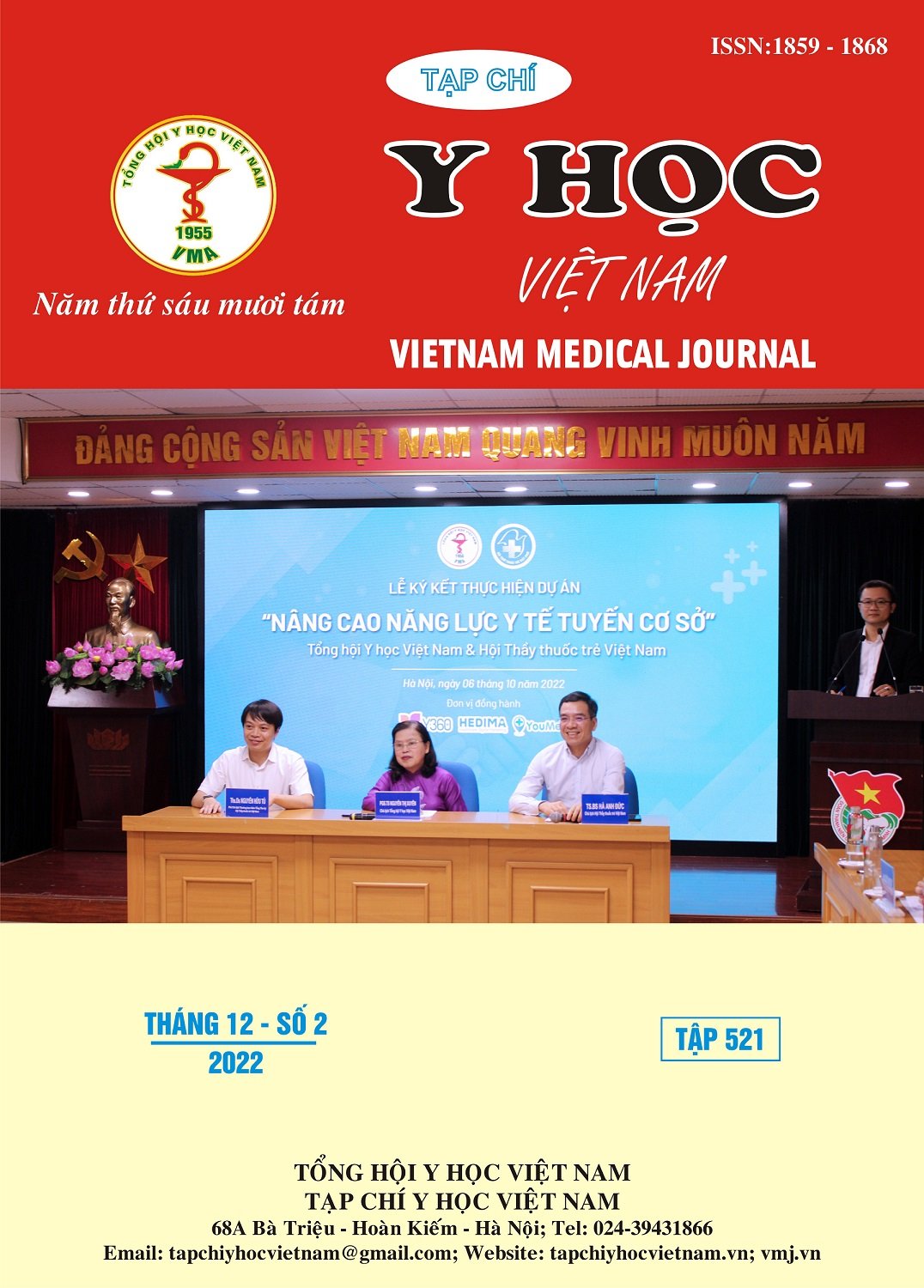CHARACTERISTICS OF PATIENTS RECEIVING “HÁO SUYỄN” (COPD) SUPPORTIVE TREATMENT WITH ACUPOINT CATGUT EMBEDDING
Main Article Content
Abstract
Objectives: Survey the characteristics of patients receiving “háo suyễn” (COPD) supportive treatment with acupoint catgut embedding at the Public Security Hospital of Traditional Medicine. Subjects: COPD Patients with dyspnea symptoms in the form of "phế tỳ khí hư" came for examination and treatment from July 2021 to August 2022. Methods: Cross-sectional descriptive study. Results: During the study period, the Department of Examination at the Public Security Hospital of Traditional Medicine treated 50 patients: The age group 60–69 accounted for the highest proportion of 44%, and the average age was 64.86 ± 8.62. Men account for 86%, higher than women. The patient's occupation is mainly manual labor. The mean duration of illness was 5.3 ± 1.39 years. 88% of patients had been exposed to tobacco for more than ten years, with 10% still smoking. The rate of patients exposed to kitchen smoke was 56%, and the rate of those exposed to occupational dust was 28%. Gold D patients account for 82% of all patients. According to the CAT scale, moderate-severe impact on life quality accounts for the highest rate of 64%. The mean mMRC dyspnea score was 1.86 ± 0.40. 72% of patients had a weak pulse, 58% had light wipes, and 62% had white moss. Conclusion: This study investigated the characteristics of patients receiving “háo suyễn” (COPD) supportive treatment with acupoint catgut embedding.
Article Details
Keywords
“háo suyễn”, COPD, acupoint catgut embedding
References
2. Nguyễn Quang Đợi (2019), Nghiên cứu đặc điểm lâm sàng, cận lâm sàng và một số yếu tố nguy cơ tắc động mạch phổi cấp ở bệnh nhân đợt cấp bệnh phổi tắc nghẽn mãn tính, Luận án tiến sĩ y hoc, Trường Đại học Y Hà Nội.
3. Nguyễn Thị Thu Hà (2010). Kết quả sử dụng bộ câu hỏi CAT đánh giá tình trạng sức khỏe bệnh nhân mắc BPTNMT tại khoa lao và bệnh phổi bệnh viện 103. Luận văn thạc sĩ y học, Học viện Quân Y Hà Nội.
4. Trương Thị Kim Nga (2006). Nghiên cứu áp dụng bộ câu hỏi ST. GEORGE’S đánh giá chất lượng cuộc sống BPTNMT ở khoa hô hấp bệnh viện Bạch Mai. Luận văn tốt nghiệp bác sỹ chuyên khoa cấp II, Trường Đại học Y Hà Nội.
5. Nguyễn Thanh Thủy (2020), Nhận xét kết quả lâm sàng và chức năng thông khí sau điều trị bệnh phổi tắc nghẽn mãn tính bằng tế bào gốc tự thân từ mô mỡ, Tạp chí nghiên cứu Y học, 137(1), 146-155.
6. Kim Anh Tùng (2019). Chương trình phục hồi chức năng cho người bệnh trong và sau đợt cấp COPD tại bệnh viện Phổi Trung ương, Luận văn Thạc sĩ y học, Trường Đại học Y Hà Nội.
7. Murray, C. J. and Lopez, A. D. (1997). Alternative projections of mortality and disability by cause 1990-2020: Global Burden of Disease Study. Lancet. 349(9064), pp. 1498-504.
8. Global Burden of Disease Study 2017 - Causes of Death Collaborators (2018). Global, regional, and national age-sex-specific mortality for 282 causes of death in 195 countries and territories, 1980-2017: a systematic analysis for the Global Burden of Disease Study 2017. Lancet. 392(10159), pp. 1736-1788.


